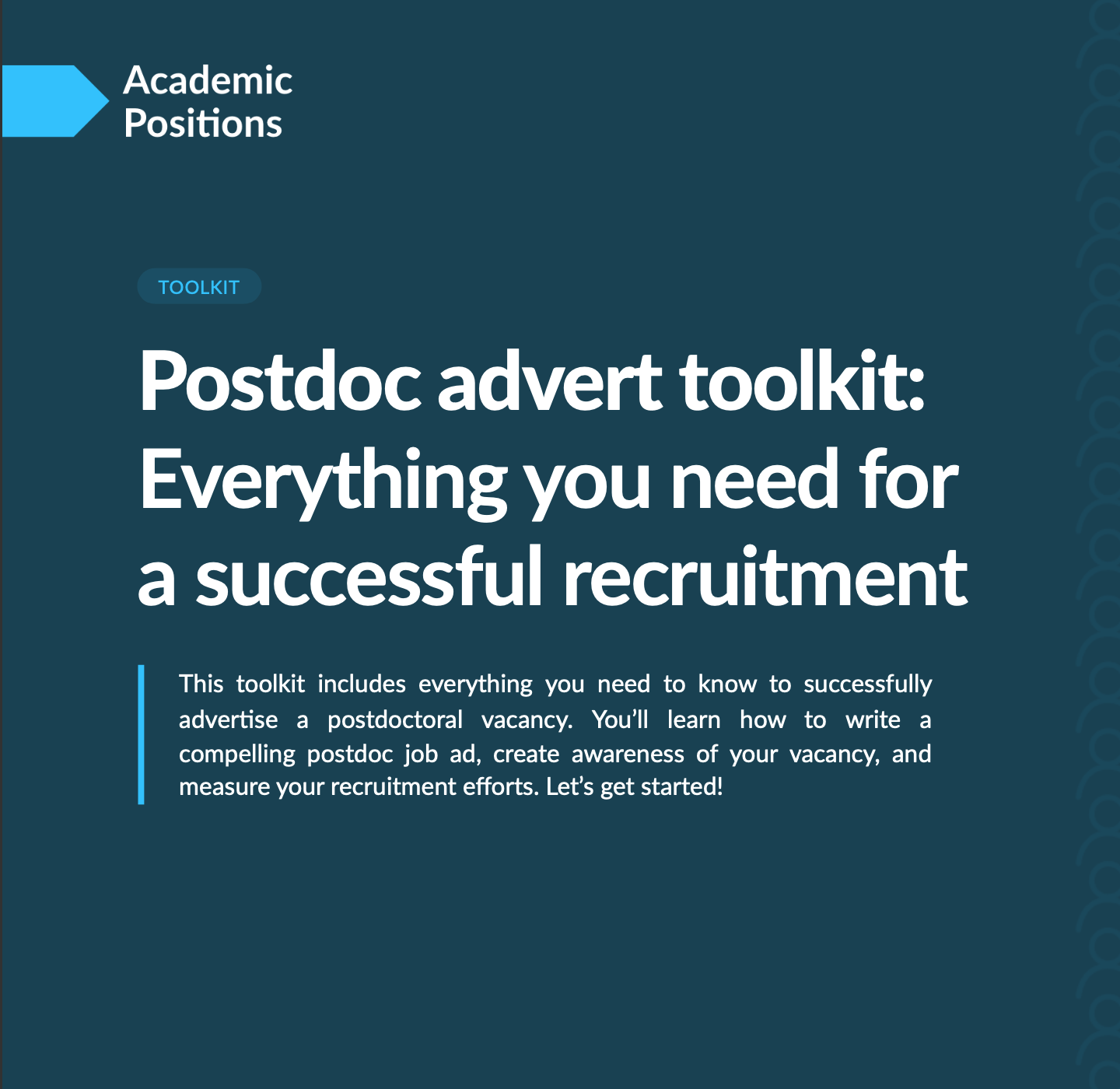Today’s blog post is the first in a new series from Judy Mielke, who joined Academic Positions as a business development manager in October 2019. Judy has a PhD in biomedical engineering and over 10 years of experience in academic publishing at Wiley, Frontiers, and Taylor & Francis. She now uses her unique academic insights to help clients in Ireland, the UK, the US, and Asia attract top research talent.
Ever since my own postdoc days, I have had the impression that many faculty members consider recruiting “good postdocs” a challenge. Later, as an academic publisher, I heard similar sentiments in my interactions with senior researchers. These days, in my daily conversations with academics and HR professionals, I witness similar struggles. Finding good postdocs is a challenge. But before we can come up with solutions, all good scientists would agree, we need to first understand the problem. So, why is it particularly challenging to recruit postdocs?
Academics, being forever insightful and analytical, offer different explanations for why they struggle to recruit postdocs:
“We cannot compete with industry, especially in areas with high skill demand, such as data science”
“This is a one-year contract and the conditions are not great”
“I have plenty of funding, I just don’t get the right candidates”
“I don’t get enough applicants but advertising externally isn’t appropriate for someone of my stature”
“I am a new PI so potential postdocs are not attracted to my lab”
As we can see from this small sample of responses, there are challenges at every step of the postdoc recruitment process. In this blog post, I will suggest some solutions to address the first stage of the recruitment process: creating awareness of your vacancy.
Let’s look at the awareness situation from the candidate’s perspective. Before we are able to make any decision, whether it is to buy a pair of shoes or apply for a fantastic position, we first need to be aware that the shoes or fantastic position exists. What does this mean for academic recruitment? In order for candidates to apply for your position, they first have to be aware that you’re hiring. They need to see your ad.
Some may argue that having an advert on the institution’s job section serves the “awareness” purpose. There are several caveats to this, however. First of all, there is a scalability issue. It is virtually impossible for any person to keep track of all the vacancies at all the top institutions around the world. Candidates have to constantly check university job pages to make sure they don’t miss the perfect opportunity. Secondly, in the competition for online attention and search engine rankings, institutional job pages do not necessarily rank highly. Finally and most importantly, if a job advert is not available externally, there is a risk that the advertisement will just be seen as a formality for a position that already has a preferred candidate. It is therefore vital that the advert is available on a reputable external site.
Download your free postdoc advert toolkit
Get your free postdoc advert toolkit with our top tips for writing and sharing a postdoc advert that will make candidates excited to apply.
The next part of the equation is identifying the right platform to promote the position on. While it seems initially like a straightforward decision, there is much more below the surface. One thing to consider is how many people will find your job advert when searching for postdoc positions in a search engine. Every job site ranks differently in search engine results. I am sure that most savvy web users know that Google rankings are specific to your own search history, which makes it more difficult to tell if a site actually ranks highly or if it’s just one you visit often. The best way to determine just how highly a site ranks and how many visitors it gets each month would be to either use independent web services that provide traffic data, or to ask the platforms to provide this information.
Numbers alone, however, don’t tell the full story. It is important to understand the demographics behind the traffic. Which countries does the job board’s traffic come from? How many female visitors does the site get? Are the majority of users in the postdoc age bracket? If your particular subject area is well represented in certain countries, does the site get a lot of traffic from these regions? For example, countries around the equator most likely do not have a strong polar research output and are unlikely to be a source of highly qualified candidates. These are questions you should consider when choosing the right platform to promote your position.
All platforms however, can be seen as a passive way of recruiting. They rely on candidates to proactively sort through information. In popular fields that have a high demand but low supply of candidates, the competition for attention is fierce and your job can easily get drowned out in the noise of all the other positions being advertised on a platform. How does one stand out from the crowd then, in a proactive and scalable manner?
The answer, in our opinion, is social media. People are spending more and more of their time on social media, giving recruiters a way to tap into highly qualified talent in a targeted and scalable manner. While social media recruitment is a new strategy for academic recruitment, it is in fact already standard practice within many industries. Academic recruitment is still playing catch up when it comes to adopting the latest technology for recruitment success. As with all new tools, the early adopters tend to gain a competitive advantage over those who are slow to adapt.
Can your institution afford to be left behind in the competition for talent? Perhaps it is time to think about taking a proactive approach to your next recruitment.
Toolkit for postdoc recruitment download form
"*" indicates required fields
Download

Download your free postdoc advert toolkit
Get your free postdoc advert toolkit with our top tips for writing and sharing a postdoc advert that will make candidates excited to apply.
Download







